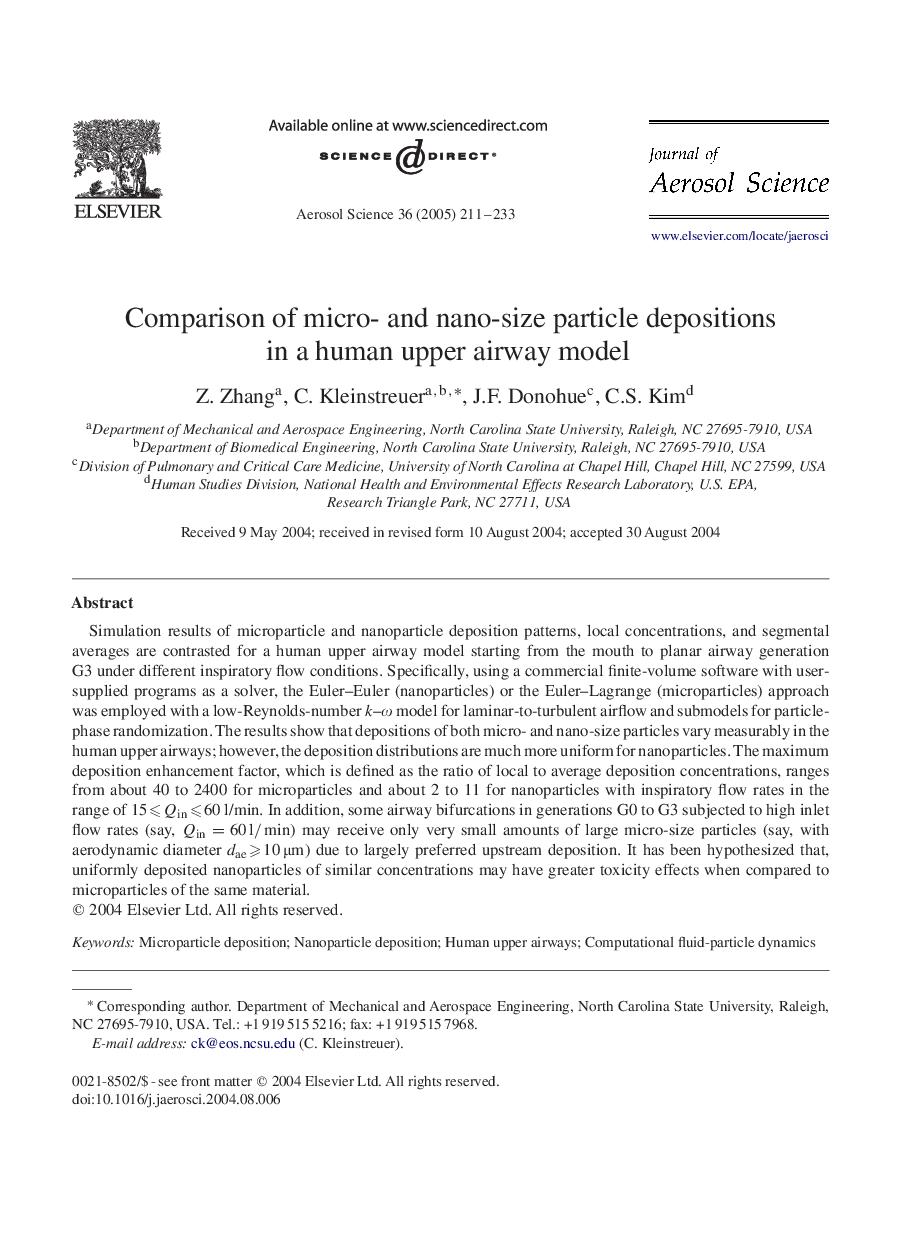| Article ID | Journal | Published Year | Pages | File Type |
|---|---|---|---|---|
| 9460487 | Journal of Aerosol Science | 2005 | 23 Pages |
Abstract
Simulation results of microparticle and nanoparticle deposition patterns, local concentrations, and segmental averages are contrasted for a human upper airway model starting from the mouth to planar airway generation G3 under different inspiratory flow conditions. Specifically, using a commercial finite-volume software with user-supplied programs as a solver, the Euler-Euler (nanoparticles) or the Euler-Lagrange (microparticles) approach was employed with a low-Reynolds-number k-Ï model for laminar-to-turbulent airflow and submodels for particle-phase randomization. The results show that depositions of both micro- and nano-size particles vary measurably in the human upper airways; however, the deposition distributions are much more uniform for nanoparticles. The maximum deposition enhancement factor, which is defined as the ratio of local to average deposition concentrations, ranges from about 40 to 2400 for microparticles and about 2 to 11 for nanoparticles with inspiratory flow rates in the range of 15⩽Qin⩽60 l/min. In addition, some airway bifurcations in generations G0 to G3 subjected to high inlet flow rates (say, Qin=60l/min) may receive only very small amounts of large micro-size particles (say, with aerodynamic diameter dae⩾10μm) due to largely preferred upstream deposition. It has been hypothesized that, uniformly deposited nanoparticles of similar concentrations may have greater toxicity effects when compared to microparticles of the same material.
Related Topics
Physical Sciences and Engineering
Earth and Planetary Sciences
Atmospheric Science
Authors
Z. Zhang, C. Kleinstreuer, J.F. Donohue, C.S. Kim,
